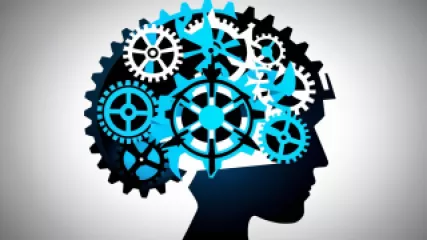The Psychology of Judgment and Decision Making
The Psychology of Judgment and Decision Making
The ability to make sound judgments and effective decisions is a critical skill in both our personal and professional lives. Understanding the psychological factors that influence our decision-making process is essential for improving the quality of the choices we make. In this comprehensive research summary, we will delve into the complexities of judgment and decision-making, exploring the cognitive biases, emotional factors, and environmental influences that shape our choices.
The Decision-Making Process
At the core of judgment and decision-making is the process of evaluating options and selecting the most appropriate course of action. This process involves a series of steps, beginning with the identification of the problem or decision to be made, followed by the gathering of relevant information, the generation of possible alternatives, the evaluation of those alternatives, and finally, the selection and implementation of the chosen option.
However, the decision-making process is not as straightforward as it may seem. Cognitive psychologists have identified a variety of biases and heuristics that can influence our judgment and decision-making, leading to suboptimal choices.
Cognitive Biases in Decision-Making
Cognitive biases are systematic errors in thinking that can have a significant impact on our decision-making. These biases arise from the way our brains process information and make judgments, often resulting in decisions that deviate from what would be considered rational or objective.
Anchoring Bias
The anchoring bias refers to the tendency to rely too heavily on the first piece of information encountered when making decisions. For example, if you are considering the purchase of a new car and the first price you see is $40,000, you may unconsciously use that figure as a reference point, even if subsequent prices are lower.
Framing Effect
The framing effect occurs when the way information is presented influences our decision-making. For instance, a medical treatment option presented as having a 90% success rate may be perceived more favorably than one presented as having a 10% failure rate, even though the two options are mathematically equivalent.
Confirmation Bias
Confirmation bias is the tendency to seek out and interpret information in a way that confirms our existing beliefs and preconceptions. This can lead us to discount or ignore evidence that contradicts our preconceived notions, resulting in biased decision-making.
Availability Heuristic
The availability heuristic is a mental shortcut that leads us to judge the likelihood of an event based on how easily we can recall similar occurrences. For example, if a recent plane crash has been widely publicized, people may overestimate the likelihood of future plane crashes when making travel decisions.
Emotional Factors in Decision-Making
In addition to cognitive biases, emotional factors also play a significant role in shaping our judgments and decisions. Emotions can influence our perception of risk, our assessment of outcomes, and the way we weigh the potential consequences of our choices.
Affect Heuristic
The affect heuristic is a mental shortcut that relies on our emotional responses to guide our decision-making. When faced with a decision, we often rely on our feelings of like or dislike towards the options, rather than engaging in a more deliberative analysis.
Loss Aversion
Loss aversion is the tendency to prefer avoiding losses over acquiring equivalent gains. This bias can lead us to make decisions that are risk-averse, as we tend to weigh potential losses more heavily than potential gains.
Regret Aversion
Regret aversion is the desire to avoid the negative emotional experience of regretting a decision. This can lead us to make choices that minimize the potential for regret, even if those choices may not be the most optimal ones.
Environmental Influences on Decision-Making
The environment in which we make decisions can also have a significant impact on the choices we make. Factors such as social norms, time constraints, and the presence of distractions can all influence the way we process information and arrive at our final decisions.
Social Influences
The opinions and behaviors of others can strongly influence our own decision-making. We are often inclined to conform to social norms and to be influenced by the choices of those around us, even if those choices may not align with our own preferences or values.
Time Pressure
Under time pressure, we may rely more heavily on heuristics and biases, as we have less time to engage in a thorough, analytical decision-making process. This can lead to suboptimal choices, particularly in high-stakes situations.
Distractions and Multitasking
The presence of distractions and the need to multitask can also impair our decision-making abilities. When our attention is divided, we may struggle to gather and process the necessary information, leading to rushed or impulsive decisions.
Improving Judgment and Decision-Making
Given the complexity of the decision-making process and the multitude of factors that can influence our choices, it is clear that improving judgment and decision-making is a significant challenge. However, there are strategies and techniques that can help us overcome the biases and limitations that often lead to suboptimal decisions.
Debiasing Techniques
Debiasing techniques are methods designed to mitigate the impact of cognitive biases on our decision-making. These can include strategies such as actively seeking out disconfirming evidence, considering alternative perspectives, and using decision-making tools like checklists or decision trees.
Emotional Intelligence and Self-Awareness
Developing emotional intelligence and self-awareness can also play a crucial role in improving our judgment and decision-making. By understanding our own emotional responses and biases, we can learn to manage them more effectively and make more informed, rational choices.
Structured Decision-Making Processes
Adopting a structured approach to decision-making, such as the use of decision-making models or frameworks, can help us navigate the complexities of the decision-making process more effectively. These tools can encourage us to consider a wider range of alternatives, evaluate them more objectively, and make more informed choices.
Conclusion
The psychology of judgment and decision-making is a complex and multifaceted field of study, with important implications for our personal and professional lives. By understanding the cognitive biases, emotional factors, and environmental influences that shape our choices, we can develop strategies to improve the quality of our decisions and enhance our overall well-being.
Ultimately, the ability to make sound judgments and effective decisions is a critical skill that can be honed and refined through practice, self-awareness, and the adoption of proven decision-making techniques. As we continue to explore the intricacies of this field, we can unlock the full potential of our decision-making capabilities and make more informed, impactful choices in all aspects of our lives.






